Positive Health Online
Your Country

Alexander Technique for Renewal of Physical and Emotional Health
by Susanna Scouller(more info)
listed in alexander technique, originally published in issue 208 - August 2013
The Alexander Technique (AT) is a skill to be learned as opposed to a treatment or a form of exercise. So you find, as you do with anything you learn, that you discover a lot about yourself in the process of learning. Every new client (or pupil) that comes to see me, has a story. And if they want to learn the AT, usually they are ready for and desiring, change.
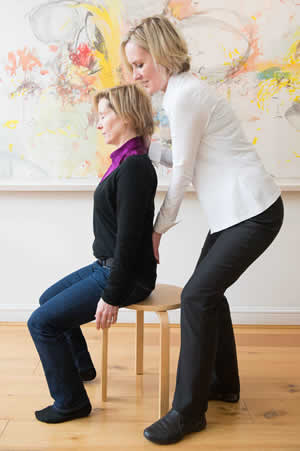
The fact that the body and mind are inextricably linked is not a new idea, but when we learn the AT, we see the connection in full technicolour. We see how a thought has an instant physiological result. And we see how, in terms of postural habits, a thought, which acts as a direct command to the systems, is more efficient than an exertion of will. If a pupil has gained the habit over their lifetime of hunching their shoulders and keeping the muscles of the upper back and neck very tight, they are likely to present with all too common problems like shoulder and neck pain, headaches and restricted head and neck movement. In this case, with my hands on the pupil’s neck and back, the last thing I will do is ask them to ‘do’ something, such as pull their shoulders back.
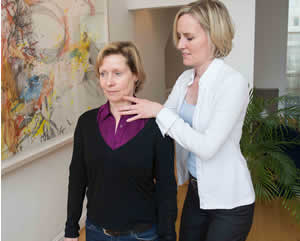
This mistaken idea that the shoulders should be actively pulled back, is a myth seemingly passed down through school rooms and army training camps, that is responsible for countless aching backs. So instead, I will ask the pupil to think. To think about softening the neck, or to think about the shoulders dropping away from the ears, or to think about the lower back widening and the pelvis hanging loosely off the end of the spine. These are all ‘directions’ in AT language, and are dependent on that pupil’s individual habits, so there is no ‘one size fits all’ list of directions.
In my experience the pupil changes as their thinking changes. Perhaps their back lengthens and widens, perhaps their breathing improves and they feel more relaxed. They are becoming more conscious of their postural habits and learning to release muscles just by not doing what they habitually do. It is this that FM Alexander taught. He taught people to help themselves improve their ‘use’, which can be translated as the way you operate the machine that is you.
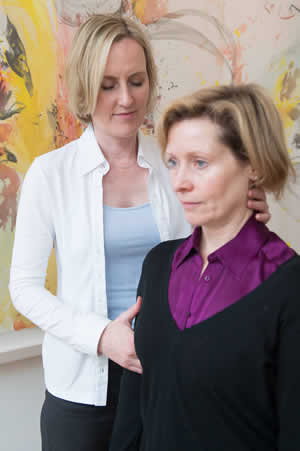
FM Alexander’s book The Use of the Self contains an explanation of how his technique evolved, and presents examples of how improved ‘use’ in a person can help. So what my pupil has experienced in the case described above, is an increased self-awareness. They have become aware that it is what they are doing with themselves, their muscle tension and lack of balance that is the root cause of the problem. Often a pupil will say “I had no idea I was holding my shoulder up!” or tensing my neck, or lower back, or any other myriad of postural habits.
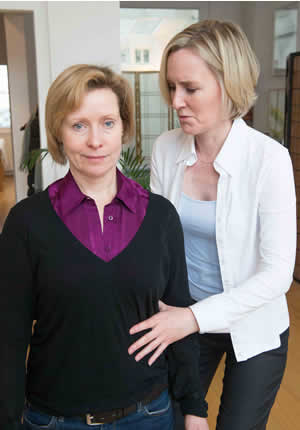
What follows is a voyage of self-discovery. Since all of our long held postural habits (like hunched shoulders, pelvis pushed forward in standing, head pulling back, or pushing forward, slumping when seated etc.) have long since become unconscious, we no longer remember what created them in the first place. It’s just what we do. We learned to walk, sit, stand, bend, a long time ago, and later the head is filled with other much more pressing matters, like finding a job, looking after a child, dealing with life’s endless stresses and pressures. And there is no doubt that life’s challenges don’t really let up, so neither do stress levels in many cases. But one route to managing stress levels, and healing injuries whether physical or emotional, is becoming aware of what habits of ‘use’ those injuries have created, gradually learning to let the habits go.
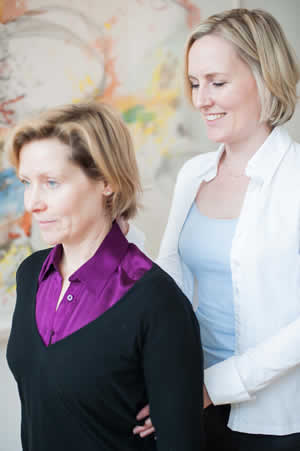
A teenage boy came to me for lessons because of a slightly hunched back and sloping shoulders. I knew he had been bullied at school, and his body language (or ‘use’) suggested someone who has learned to look at the ground, as though wanting to be invisible. I had the privilege of teaching him for a couple of years, and watching his habits of use change. At the same time he seemed to gain self -confidence, and become happier. Alexander Technique teachers are not therapists, and we never discussed the bullying in his past, so all I was doing was gently encouraging him through my hands and verbal guidance, to have the courage to stand up, to look out and face the world. Once a postural habit like stooping has been created, the habit will perpetuate the experience that created it. Somehow the pattern must be broken.
Another teenage boy I taught was extremely tall in his early teens. His stoop was developed as a communication tool that would have felt a necessity to him. His peers were all lower than him in space. By the time he came to me for lessons he was 16, and by then the dropping of the head and neck was just a habit. The habit remained although he was by then not the tallest, only one of the tallest. Habits are very determined. This particular boy was not lacking in self-confidence, but through the AT he gained in self-awareness, and prevented his neck and upper back from worsening into a harmful bent shape in years to come.
I lived with high levels of anxiety and low self-esteem for much of my teenage years, and my twenties. My habits of use were a reflection of this. I had tight shoulders and neck, and I held a lot of tension in my stomach and pelvic area. I was always pushing the pelvis forward in standing, then when I sat, I slumped. I found when I learned the AT that trying to let go of my habits of tension and imbalance propelled me at the same time to investigate what was causing the anxiety in the first place. We are not born with tense muscles and bent necks, it is our experience that creates them, and our responses to that experience. So much of the tight muscles came down to how I felt about myself. I saw a great psychotherapist at the time and as my self-worth increased, my habits changed. Body language, posture, deportment, all things that Alexander summed up in the one word: ‘use’ can say so much about how a person feels about themselves. The AT makes us aware of our habits of use, and gently leads us forward on a path of change, where we become better versions of ourselves.
Comments:
-
No Article Comments available